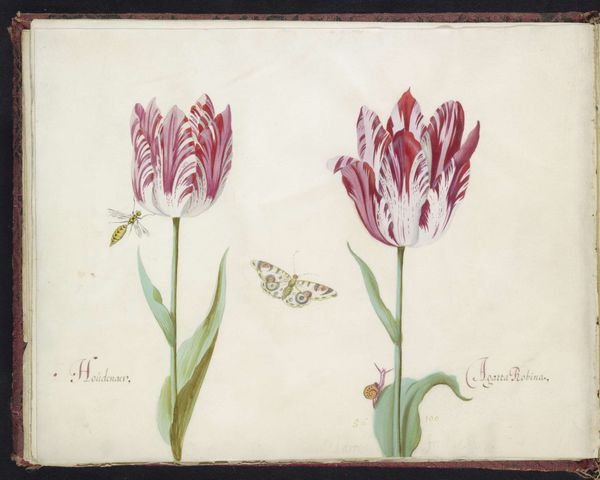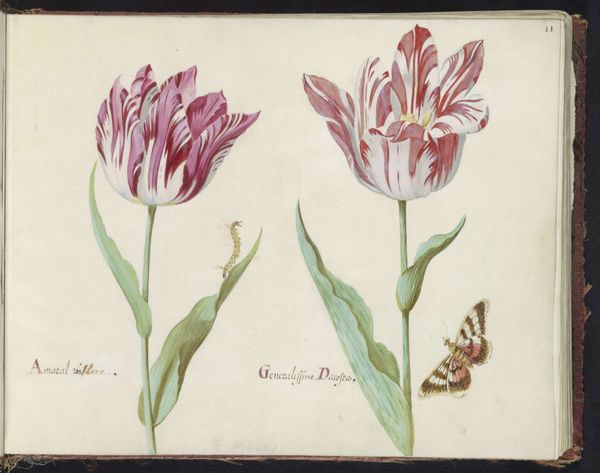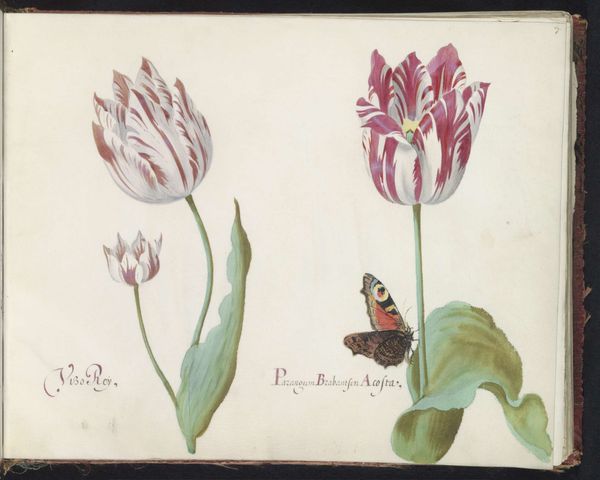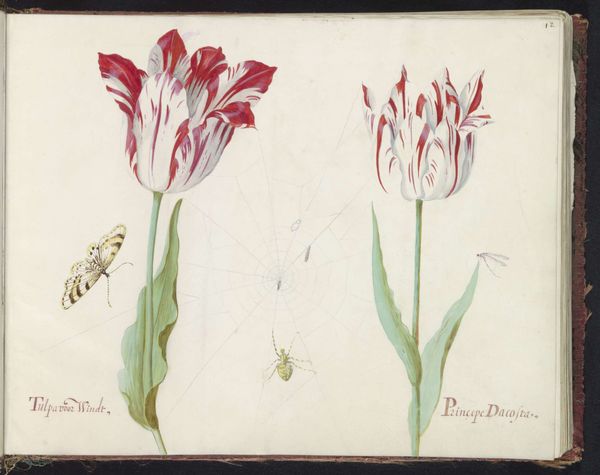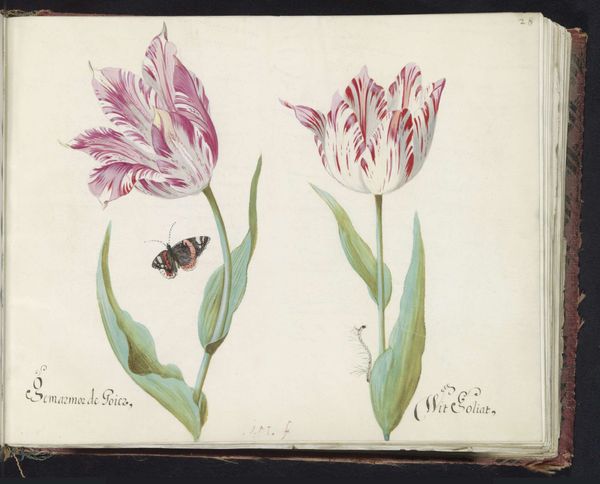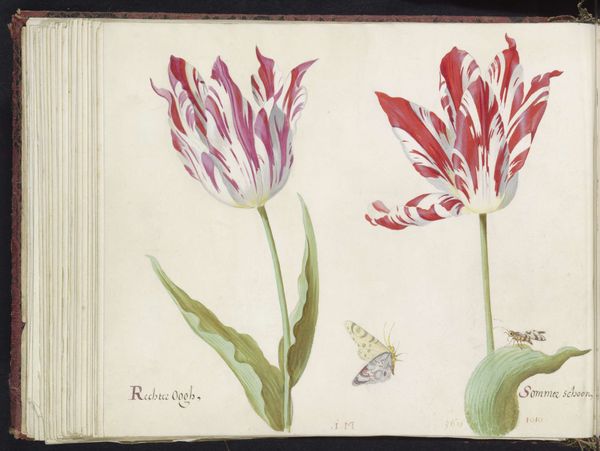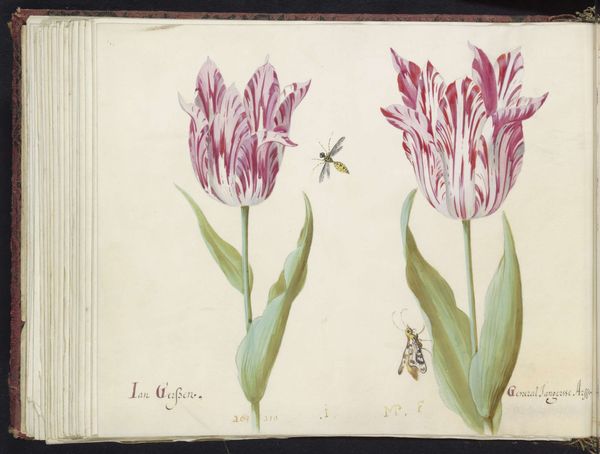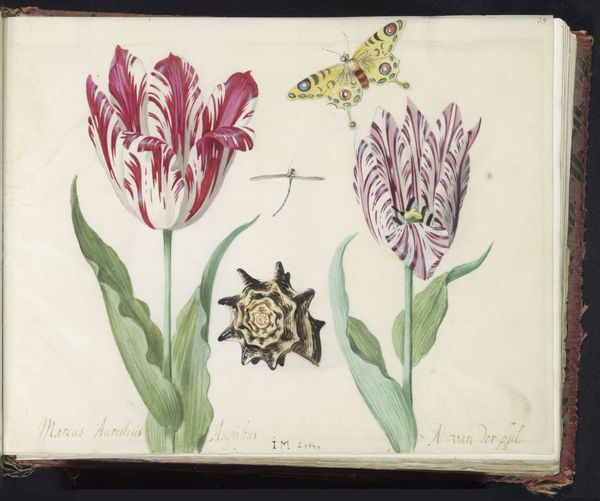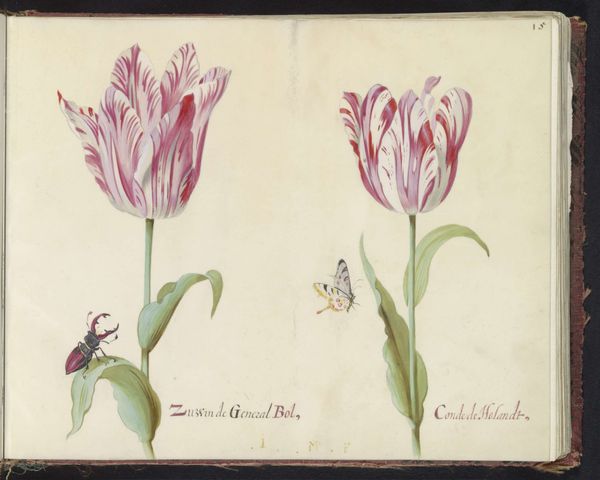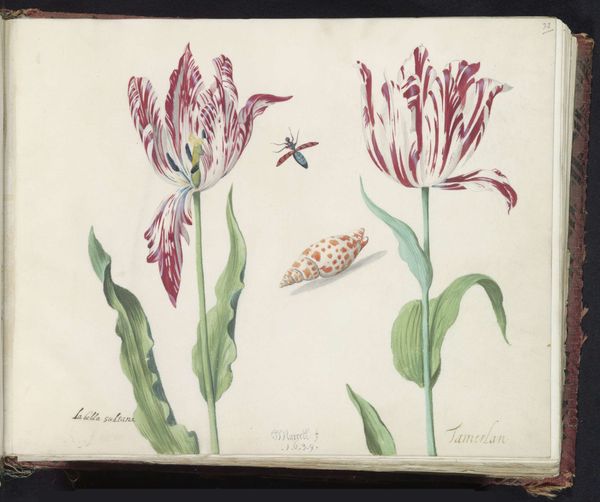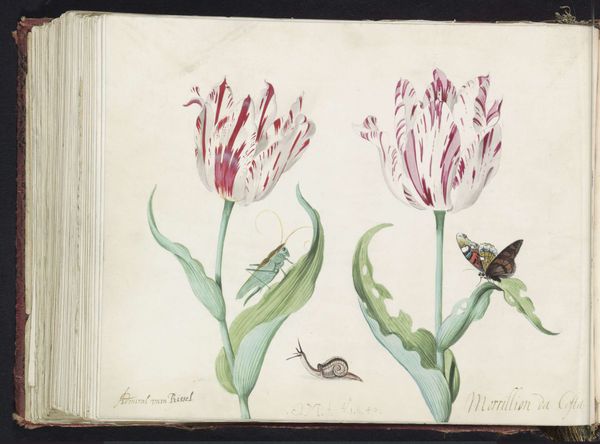
painting, watercolor
#
dutch-golden-age
#
painting
#
figuration
#
watercolor
#
watercolour illustration
#
botanical art
#
watercolor
Dimensions: height 265 mm, width 335 mm
Copyright: Rijks Museum: Open Domain
Curator: This watercolor and gouache artwork is entitled "Twee tulpen met waterjuffer en dagpauwoog" by Jacob Marrel, dating to 1637. It's currently held in the Rijksmuseum collection. Editor: It's quite striking! The composition immediately directs the eye to the vibrant tulips, but there's a lightness, an airy quality that keeps it from feeling heavy, despite the intense detail. Curator: Precisely! Marrel's technical skill is undeniable, especially in the depiction of light on the petals. But this piece must be considered against the backdrop of the Dutch Golden Age. These were boom times, and the burgeoning middle class had an appetite for such refined imagery. Editor: So, a kind of status symbol, portraying the sought-after, fashionable, almost unattainable? Those striated petals—they're almost extravagant. The diagonal lines of colour direct the viewers eyes along the contours of the petals. Curator: Absolutely! Tulipmania had gripped the Dutch Republic, driving prices to unimaginable heights. Owning a tulip like these depicted here, a 'broken' tulip with its characteristic streaking, was a mark of considerable wealth. Editor: The stark white background makes the subjects of the botanical illustration pop. How interesting that something so seemingly pure and scientific as a floral study also carried such heavy social baggage. The dragon fly adds a sense of ethereal quality and movement, juxtaposing itself nicely against the stillness of the watercolours Curator: Consider, too, that flower paintings were frequently laden with symbolic meanings, meditations on mortality and the transience of beauty. Even these cheerful subjects serve to evoke the brevity of beauty in its finest hour. Editor: That fragility becomes so tangible considering how we understand art now, after the advent of photography and so on. It really changes my experience of seeing this painting and the world through it. Curator: Exactly. These are meticulously observed and rendered specimens meant for enjoyment but are also testament of that particular cultural moment. Editor: It truly is extraordinary how this ostensibly simple flower study encompasses the social, economic, and aesthetic values of its era.
Comments
No comments
Be the first to comment and join the conversation on the ultimate creative platform.

